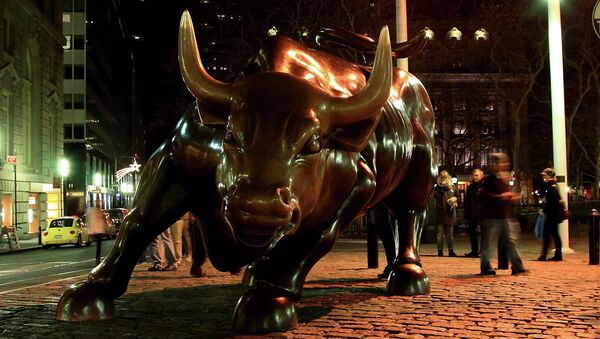Thomas Gilbert, founder of Wainscott Capital Partners Fund, was found shot through the head in the bedroom of his East Side Manhattan apartment. Police recovered a.40-caliber handgun at the scene.
While no charges have yet been filed, police took Thomas Gilbert Jr. in for questioning Monday morning.
While a motive for the shooting has yet to be determined, Gilbert Sr.’s death comes as the latest in a series of grim – and often mysterious – deaths of financiers in the past year.
The Beginning of Winter
On December 7 of 2013, a 34-year-old financial analyst named Joseph M. Ambrosio suffered a sudden acute respiratory attack and died. A week later, another 34-year-old who worked for JPMorgan in Texas died of a heart attack.
But while these accidents may seem innocuous enough, several other deaths that followed early last year were considerably stranger.
On January 26, William Broeksmit, a recently retired executive at Deutsche Bank AG, hung himself in his London home. Four days later, the body of Mike Dueker, an economist with Russell Investments, was found along an embankment beneath the Tacoma Narrows Bridge in Washington. Four days after that, on February 3, Ryan Henry Crane, executive director of JPMorgan, was found dead in his home from what medical examiners deemed an “ethanol toxicity accident.”
Richard Talley, founder of a financial service which was under investigation by the Colorado Division of Insurance, was found dead the next day after being shot eight times with a nail gun, in an apparent suicide.
And then there are are the several instances of financial executives who leapt from their office buildings. Dennis Li Junjie leapt from JPMorgan headquarters in Hong Kong after police failed to talk him down. Gabriel Magee was found on the 9th floor roof of the JPMorgan in London, having fallen from a higher floor the night after his girlfriend had reported him missing.
As of August 2014, JPMorgan alone had seen 48 of its employees die suspiciously within a year.
Perhaps strangest of all is the disappearance of Wall Street Journal commodities reporter David Bird. On January 11, Bird told his family he was going for a walk and hasn’t been seen since. Bird left the house without the medication he needed twice daily, and left his cellphone charging inside, which to many, ruled out the possibility that he could have purposefully abandoned his family.
Conspiracy or Numbers?
While conspiracy theorists no doubt try to link these deaths, there is no indication that these executives were the victims of some kind of global plot. Still, while the deaths all have the finance industry in common, it could just be a matter of occupational hazard.
Jobs in the financial industry are undoubtedly stressful. The long hours and pressures of trading with exorbitantly large sums of money can have deteriorating effects on the mind and body.
A Business Insider report found that finance workers are 1.51 times more likely to commit suicide than average. The Centers for Disease Control and Prevention named financial specialists as one of the worst jobs in terms of suicide rates, second only to engineers and scientists.
The financial industry also sees regular upticks in suicides, which can be at least partially based on the market itself. During the Great Depression, over 40,000 Americans took their own lives in response to the market’s plummet. Similarly, it’s possible that many of the recent financial deaths can be attributed to stress accrued through the 2007-08 financial crisis.
It’s also worth noting that, broadly, the financial sector is a huge industry that employs roughly 5.87 million people. A seemingly large number of deaths could simply be a statistical expectation.
While the deaths, including the latest of Thomas Gilbert, are most assuredly unrelated, it may speak more of conspiracy theorists themselves. Perhaps it’s unsurprising that broad speculation would occur about an industry with such a reputation for duplicity, and which so often absolves itself of responsibility.



